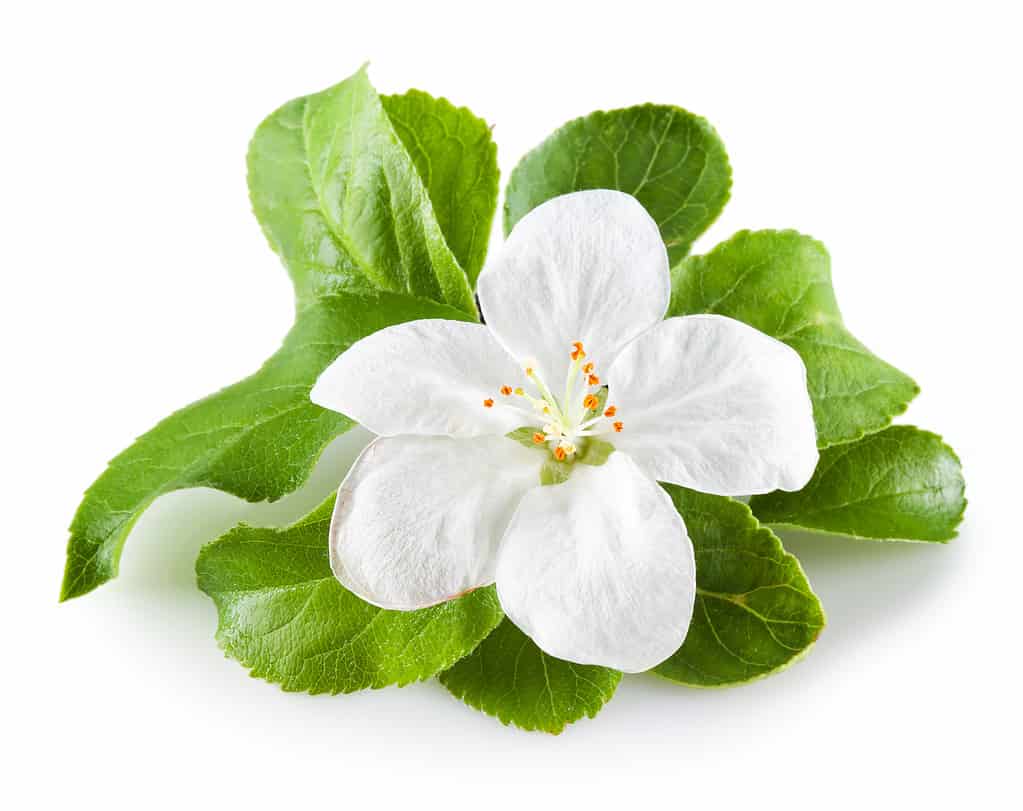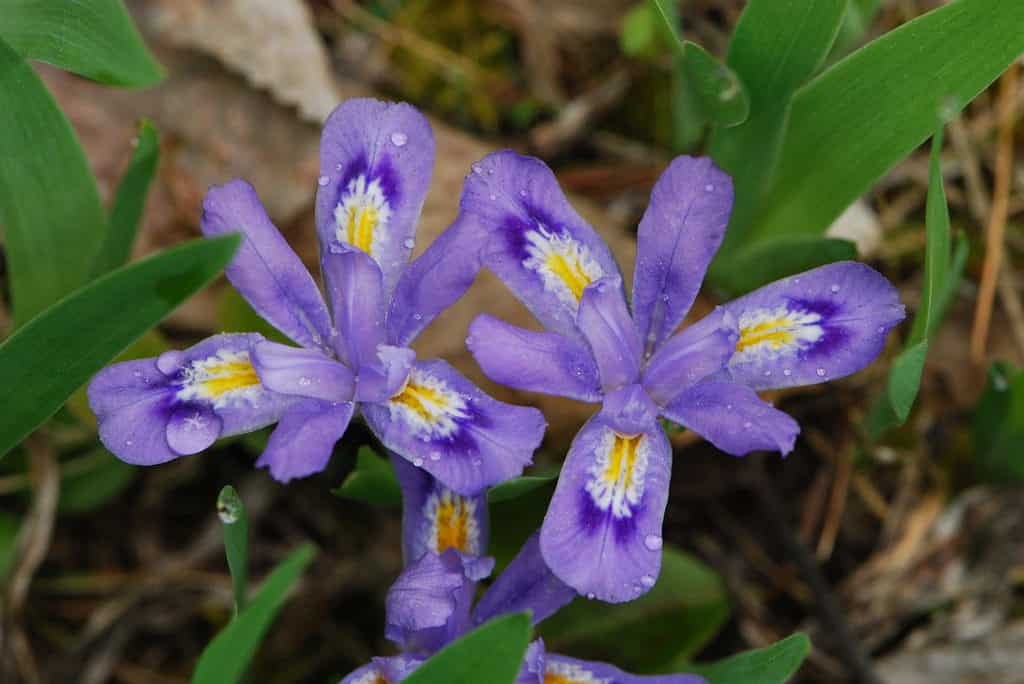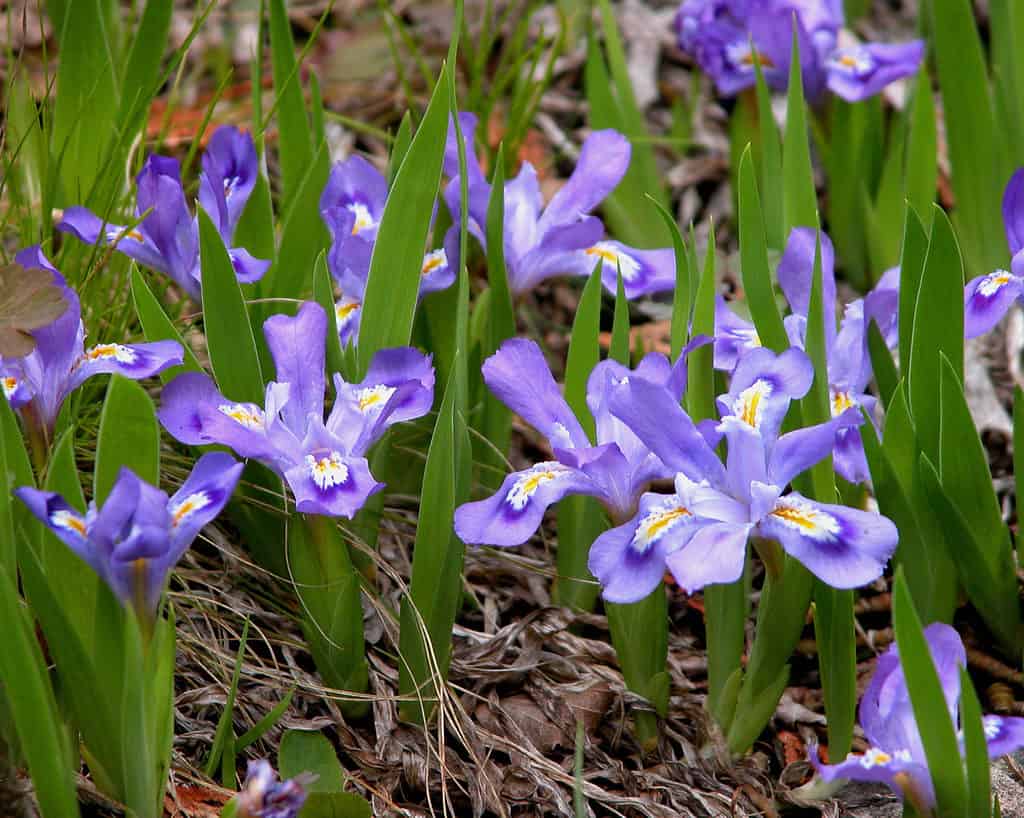Key Points
- Michigan has two state flowers, the Dwarf Lake Iris and the Apple Blossom.
- The Apple Blossom is the state flower. It blooms in May and June and grows wild throughout the state.
- The Dwarf Lake Iris is the state wildflower. It blooms in May and June and can grow near cedar forests near the lakeshore. It is a threatened species in Michigan, so do not pick one!
Michigan is the 11th most populous state in the United States, located in the country’s Great Lakes and Midwestern areas. It borders four other states: Wisconsin to the west, Illinois to the southwest, Indiana to the south, and Ohio to the east. Michigan is home to two peninsulas – The Lower Peninsula and Upper Peninsula – connected by an 8-mile bridge called The Mackinac Bridge.
This state has a variety of natural scenery with over 12 million acres of forest land, many lakes and rivers, and beaches along its three great lake shores! Michigan’s economy relies heavily on tourism due to its abundance of outdoor activities like skiing, fishing, and hunting making it one of America’s premier tourist destinations.
Detroit is also known for being the “Motor City” due to its long history in automobile production, making up much of the state’s industry today.
Michigan State Flowers
- State Flower – Apple Blossom (Pyrus coronaria)
- State Wildflower – Dwarf Lake Iris (Iris lacustris)
Apple Blossom

©iStock.com/Tim UR
An apple blossom (Pyrus coronaria) is a small, pink and white flower that grows on an apple tree. The flower’s petals are delicate and have a pleasant scent, like sweet apples. Michigan chose this as its state flower in 1897 due to its abundance throughout the state and beautiful appearance. This tree is native to Michigan and grows wild throughout the state.
Bloom Time
Pyrus coronaria, or the common or northern crabapple, is the official state flower of Michigan. It typically blooms in May and June in Michigan with its small white flowers that are tinged with pink. The petals of these fragrant flowers have five-petal clusters and a yellow center. These trees can be found across Michigan’s countryside, as well as near rivers, streams, lakes, and ponds. They are also found more frequently in areas that were once inhabited by Native Americans, such as around old homesteads or abandoned villages. With their beautiful spring blooms, these trees create perfect photo opportunities for nature lovers!
Where To See Them
The apple blossom can be seen in many areas across Michigan. The best places to view them are parks and botanical gardens, which specialize in growing them. For example, Meijer Gardens & Sculpture Park in Grand Rapids has a large collection of Pyrus coronaria on display from April through June each year. Another great place to see these beautiful flowers is the Matthaei Botanical Gardens and Nichols Arboretum in Ann Arbor. In addition, you may find smaller clusters of Michigan’s state flower along hiking trails or other outdoor recreational areas throughout the state during their blooming season (April/May).
Growing Them
You can see these beautiful trees growing wild throughout the state. They thrive best in full sun and moist soil conditions with a neutral pH level. To grow Pyrus coronaria from seed, either collect seeds from existing trees or purchase them online.
Plant seeds outdoors during fall or winter in shallow trenches that are at least 1 inch deep. Keep soil consistently moist but not wet until seedlings have grown to an inch or two tall. Then water less often, allowing the topsoil to dry out between watering sessions.
Once seedlings have reached about 8 inches tall, fertilize them with a balanced fertilizer such as 10-10-10 according to package instructions. Prune young trees regularly for optimal growth and shape, removing any dead branches immediately when noticed.
Dwarf Lake Iris

©Joshua Mayer from Madison, WI, USA, CC BY-SA 2.0 <https://ift.tt/EY35LCb>, via Wikimedia Commons – License
The Dwarf Lake Iris is a perennial wildflower native to the Great Lakes region and Michigan specifically. It has a long, thin stem with showy lavender-blue flowers comprising three petals and three sepals. The flower’s lower petal is marked with yellow or orange spots in the center, giving it an eye-catching appearance among other wildflowers. This flower was designated as Michigan’s state wildflower in 1998 due to its unique beauty and abundance within the state boundaries. Its blooming period starts from late spring through summer when these beautiful flowers grow along lake shores, wet meadows, marshes, and ditches.
Bloom Time
The Dwarf Lake Iris is the official state wildflower of Michigan, and it blooms from May to June. The flower grows best in wet, sandy areas near lakes and rivers, such as on the shorelines of the Great Lakes. It can also be found in some forested regions throughout Michigan. The Dwarf Lake Iris is hard to spot when it isn’t in bloom because the leaves look like thick blades of grass. But in the spring, your can keep your eyes peeled for the lavender flowers. To witness this beautiful bloom for yourself, visit any one of Michigan’s numerous beaches during late spring!
Where to See Them

©Joel Trick, USFWS, Public domain, via Wikimedia Commons – License
The Dwarf Lake Iris, or Iris Lacustris, can be found in several areas around Michigan. It is typically found on the shores of Lake Michigan and Lake Huron, as well as other coastal wetlands. It can be found in areas with shallow, wet soil made up of limestone sands and gravel. They tend to occur near woodlands with white cedar trees, often hidden behind sand dunes or beach ridges.
The species is listed as threatened and has special status under both the United States Endangered Species Act and the Canadian Species at Risk Act. Whatever you do, do not pick them or dig them up! In 1988, the Dwarf lake iris was declared a threatened species at the federal level and as state-threatened in Michigan and endangered in Wisconsin. Over time, its habitat has been greatly diminished due to the construction of residential or holiday homes on its shore, the widening of roads, the use of chemicals and salt, and the destruction caused by off-road vehicles.
While it may not be easy to find these flowers growing wild due to their rarity, they are occasionally cultivated by private gardeners specializing in rare plants. To find them in their natural habitat, you should take a trip out to one of Michigan’s many nature reserves along its coastlines. There you may have a chance to see this beautiful flower blooming where the trees meet the dunes.
Growing Them
You can grow Dwarf Lake Iris in your home garden. These beautiful wildflowers are native to Michigan and thrive in moist soil and full-sun areas. To ensure successful growth, plant the seeds right away in a soil-rich compost. Cover the seeds with a thin layer of compost or grit, ensuring the depth is proportional to their size. You can sow the seeds at any time, and they may germinate faster if kept in temperatures between 60-68 degrees Fahrenheit. It’s often best to sow them in an unheated greenhouse and let nature take its course, as some seeds have built-in dormant periods and only sprout in the spring, giving them a full season of growth.
After planting, fertilize them with a balanced fertilizer once per month throughout the growing season. Dwarf Lake Iris requires minimal maintenance but benefits from regular watering when conditions are dry for extended periods of time. Once established, they will bloom each year from mid-May until early June and make an excellent addition to any flower bed or garden!
The post Discover the Official State Flowers of Michigan (When They Bloom and Where to See Them!) appeared first on AZ Animals.
from Animal News, Facts, Rankings, and More! - AZ Animals https://ift.tt/xhOPbtZ